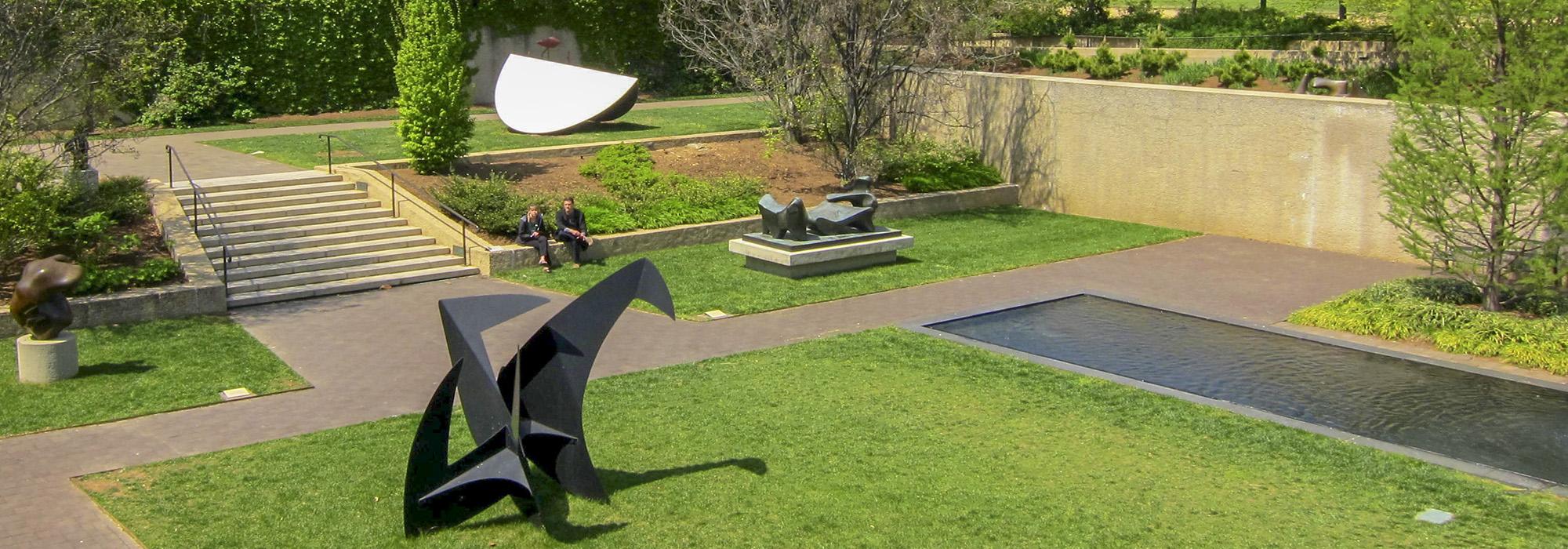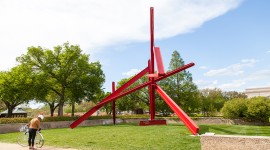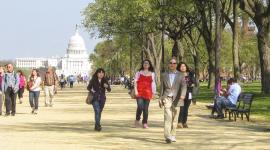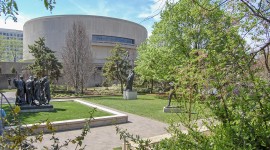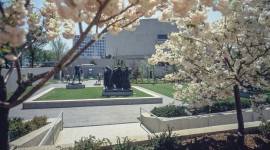Good News for Lester Collins’ Work at the Hirshhorn
On February 24, 2020, representatives of the Smithsonian Institution announced the results of months-long research on the work of landscape architect Lester Collins at the Hirshhorn Museum and Sculpture Garden. The primary finding of a new report prepared by Robinson & Associates and historical landscape architect Laura L. Knott was that Collins’ redesign of the garden contributes to the property’s historic character, thus adding 1981, the year the work was completed, to the property’s Period of Significance (POS):
The study has concluded that the overlay of Collins’s 1981 alterations onto the framework of Bunshaft’s 1974 garden warrants a revision of the period of significance for the National Register of Historic Places nomination. The study recommends that the period of significance be identified as “1974, 1981” to recognize both the original design and Collins’s later changes.
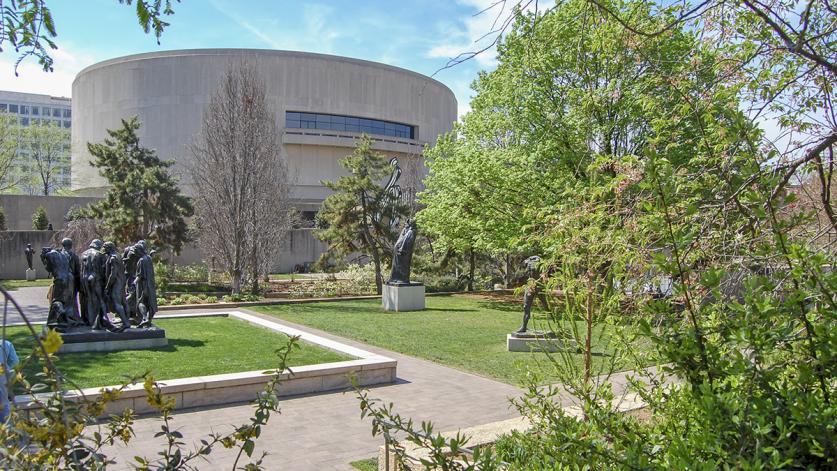
The news came during a meeting of consulting parties involved in the ongoing Section 106 review of proposed changes to the museum’s sculpture garden. The Smithsonian Institution, which owns the Hirshhorn Museum and Sculpture Garden, has tapped internationally acclaimed Japanese artist Hiroshi Sugimoto to redesign the garden to meet new programmatic needs. Because the garden is a contributing feature of the National Mall Historic District, a Section 106 review is now underway in accordance with the National Historic Preservation Act.
As a consulting party to the federal reviews, TCLF had previously argued that the former POS, originally restricted to 1974 in recognizing the design by Gordon Bunshaft of Skidmore, Owings & Merrill, ignored the critically acclaimed redesign carried out by Lester Collins between 1977 and 1981. During that period, Collins transformed what had been called a “desert-like expanse” into a shaded, welcoming landscape. He introduced a central stair flanked by lateral ramps along the side of the garden that abuts the National Mall, thus affording every visitor a dignified arrival and a comparable spatial experience. Collins also clearly defined the garden’s circulation and display areas, thereby increasing the space available for presenting the museum’s sculpture collection. The District of Columbia Historic Preservation Office validated TCLF’s concerns in May 2019, suggesting that Collins’ work should be re-assessed as possibly contributing to the Hirshhorn’s POS.
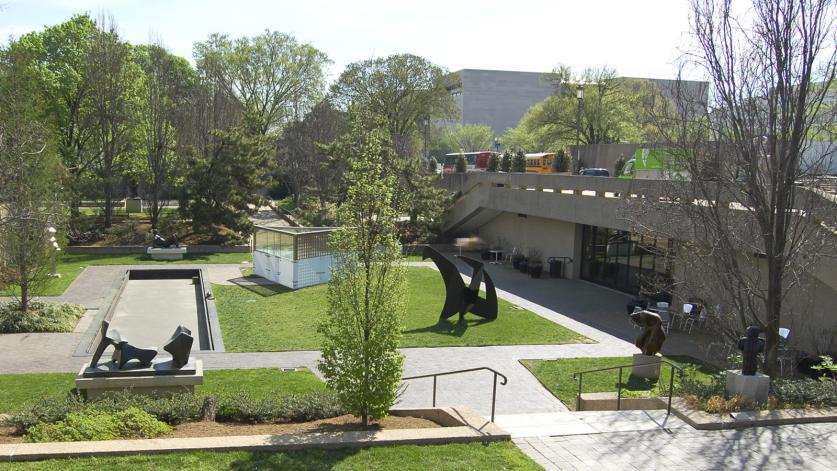
The newly released report (along with the public presentation of its findings) also evaluates the integrity of the sculpture garden with regard to the POS. It concludes that the garden retains integrity in all seven aspects codified by the National Register of Historic Places, finding a high degree of integrity in Location, Setting, Association, and Feeling and a moderate degree of integrity in Materials, Design, and Workmanship, the latter three aspects uniformly downgraded because of a loss of plant materials associated with the POS.
The report goes on to say that the three projects most often mentioned in the available literature on Collins’ career were his town plan for Miami Lakes, Florida, his work at Innisfree Garden in Millbrook, New York, and his redesign of the Hirshhorn Sculpture Garden. Present at the meeting was Kate Kerin, the landscape curator at Innisfree Garden, who spoke about Collins’ preeminence as a landscape architect and informed the audience that Innisfree had recently been added to the National Register.
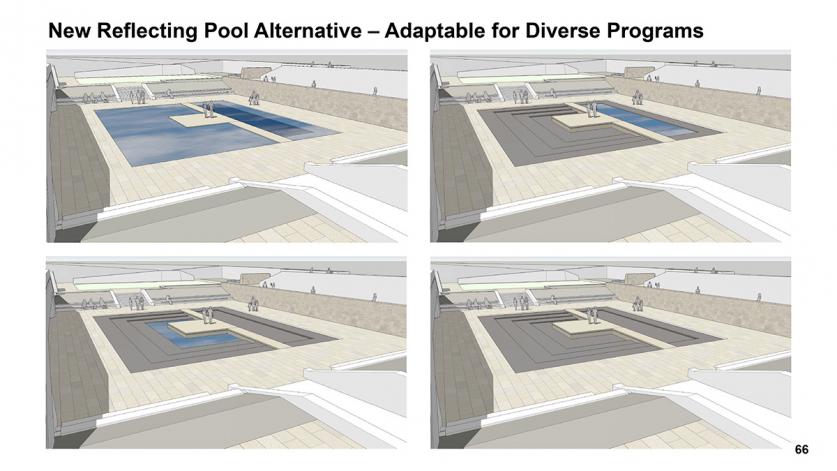
Also presented at the meeting was the initial concept for a “New Reflecting Pool Alternative” for the current redesign, which would reconfigure many of Collins’ garden rooms and replace the central swath of lawn with a theater-like arrangement of U-shaped platforms descending before a stage. The platforms, presumably added for seating, could alternatively be covered by a scrim of water, the whole arrangement set within an expanse of rectangular pavers. Members of the audience questioned the wisdom of exchanging lawn for hardscape, given the ever-increasing temperatures now predicted as a result of climate change. It is also worth remembering that the uncomfortable heat that visitors experienced in Bunshaft’s gravel-paved, sunken garden was one of the primary deficiencies of the design that Collins successfully remedied.
At this point, however, the federal review remains primarily focused on whether the Area of Potential Effects and the Period of Significance have been correctly identified, as well as the findings of the integrity analysis. Comments from consulting parties, focusing on those questions, are being accepted until March 25, 2020.



